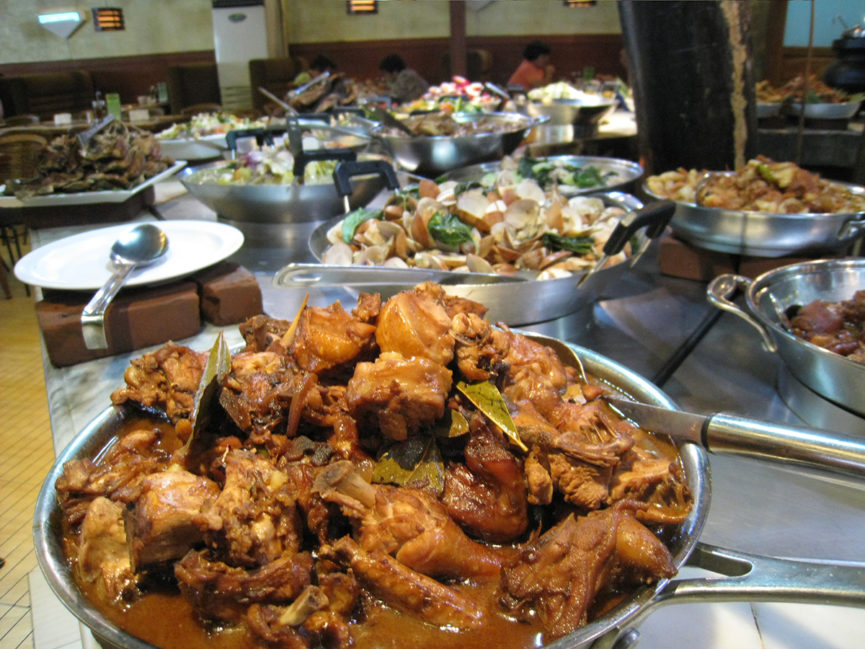Photo by Trishhhh on Flickr
The Philippines’ unique identity is strongly embedded in the food we eat. With our country’s rich history filled with various multicultural interactions, it’s inevitable for our food to be touched by foreign influences.
Filipinos love cooking, but we love eating more. We look for any excuse to get together and enjoy a good meal with friends and family. But even in the privacy of our own homes, we try to make our meals as hearty as possible, as salu-salo-like as we can.
Here are just some typically Pinoy food that we like eating together – and where they actually came from:
1. Taho
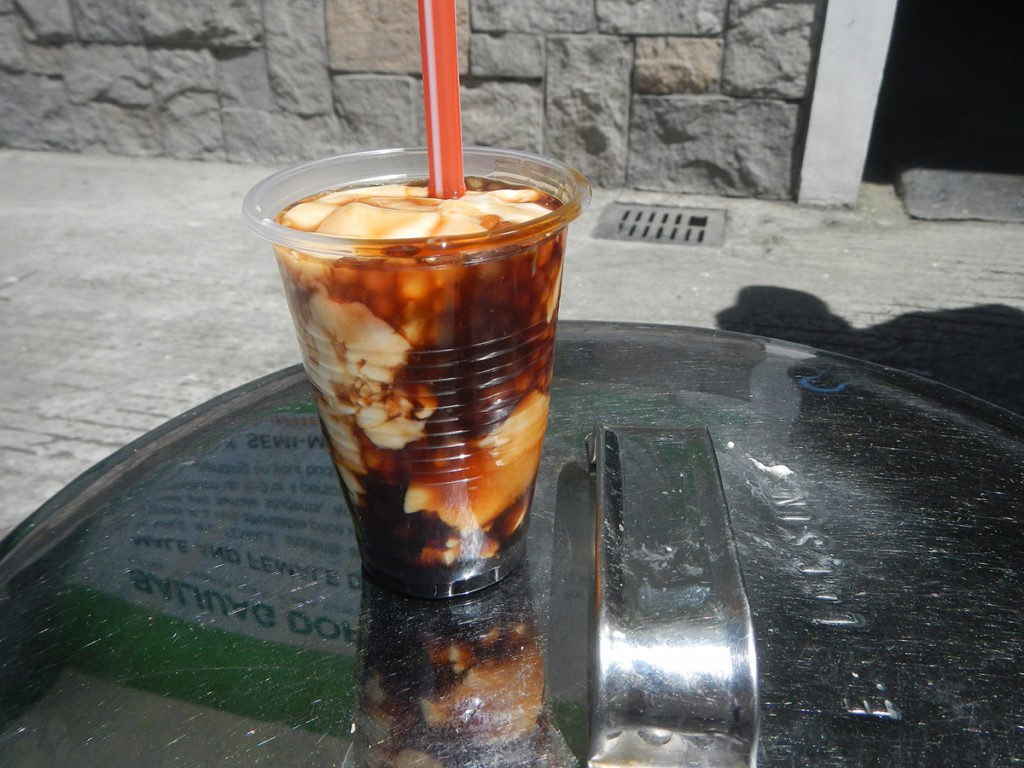
Did you know that taho wasn’t originally Filipino? I distinctly remember being shocked at ten years old when my teacher casually mentioned, “You guys know that taho was originally Chinese, right?” I really didn’t.
The snack always came to me as a welcome interruption in the middle of the day or night, the kuya selling them shouting “Tahooo!” in a way that residents all the way to the fifth floors of different buildings could hear. He always dressed in a simple shirt, long shorts, and tsinelas. Though I couldn’t put it into words then, this knowledge felt integral to my experience as a Filipino child. My childhood, as they describe it in memes these days, felt like a lie.
It turned out that taho really was Chinese in origin. In fact, certain Chinese restaurants in the Philippines still sell it as dessert. In these enclosed spaces, they are generally sold chilled.
The Filipino taho is generally sweeter and served hot in a small plastic cup, usually under the sweltering heat of the sun. The experience is completed by asking the kuya to add a few more sago or to add some more syrup, according to your own taste, of course.
2. Kare-Kare
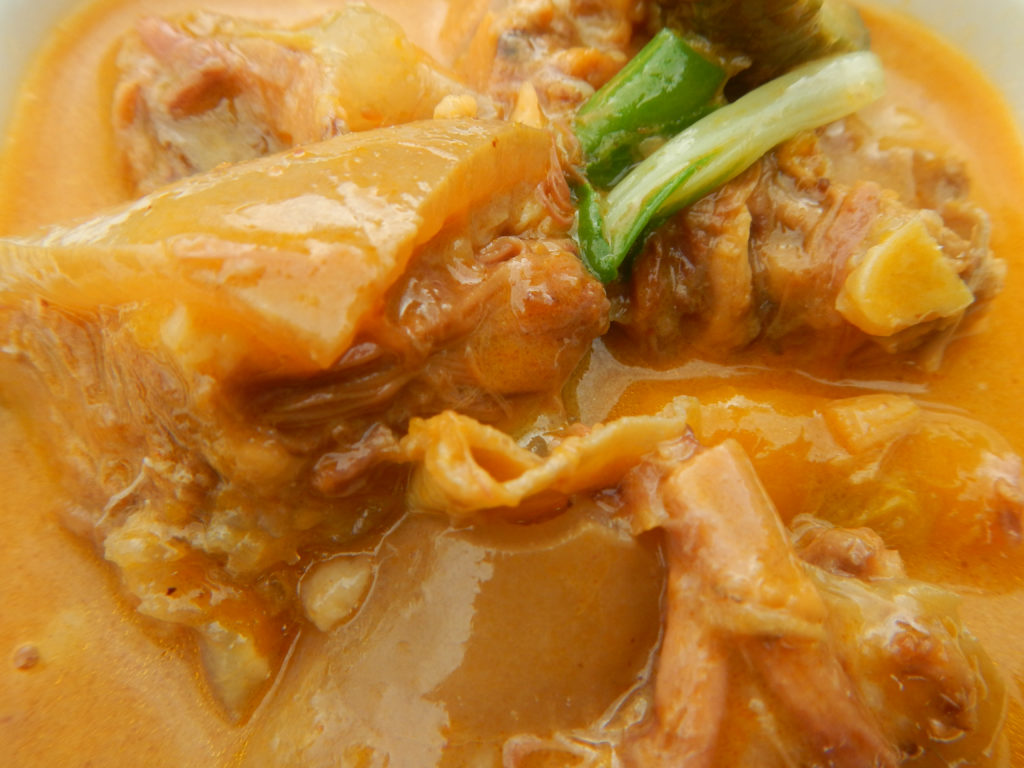
This favorite Filipino dish is an oxtail stew complemented by peanut sauce, turning it into a color crossed between mustard yellow and tangerine orange. Depending on where it’s made and who it’s made by, kare-kare can have different ingredients, but one vital ingredient that the traditional kare-kare can’t do without is the tuwalya, also known as beef tripe.
“Tuwalya” is the Filipino word for towels. This part of the dish is known as such because of its striking resemblance to a towel. “Totoong tuwalya ba ‘yan?” was my first question about kare-kare. All succeeding impressions I had of kare-kare after that were lousy puns on curry.
Interestingly, it turns out that the dish was actually meant to be a local iteration of the famous Indian dish. But as the Indian and Filipino palates are vastly different, the very Filipino kare-kare turned out to be very far from its inspiration. While this is one of the theories on how its name came to be, the origin of the dish itself is up for debate. Some say it comes from Pampanga; some say it comes from pre-colonial Moro elite; and others say our European colonizers had a direct hand in the making of the dish. All this is possible, and that’s exactly what makes the history of Filipino food so interesting.
3. Lumpiang Shanghai
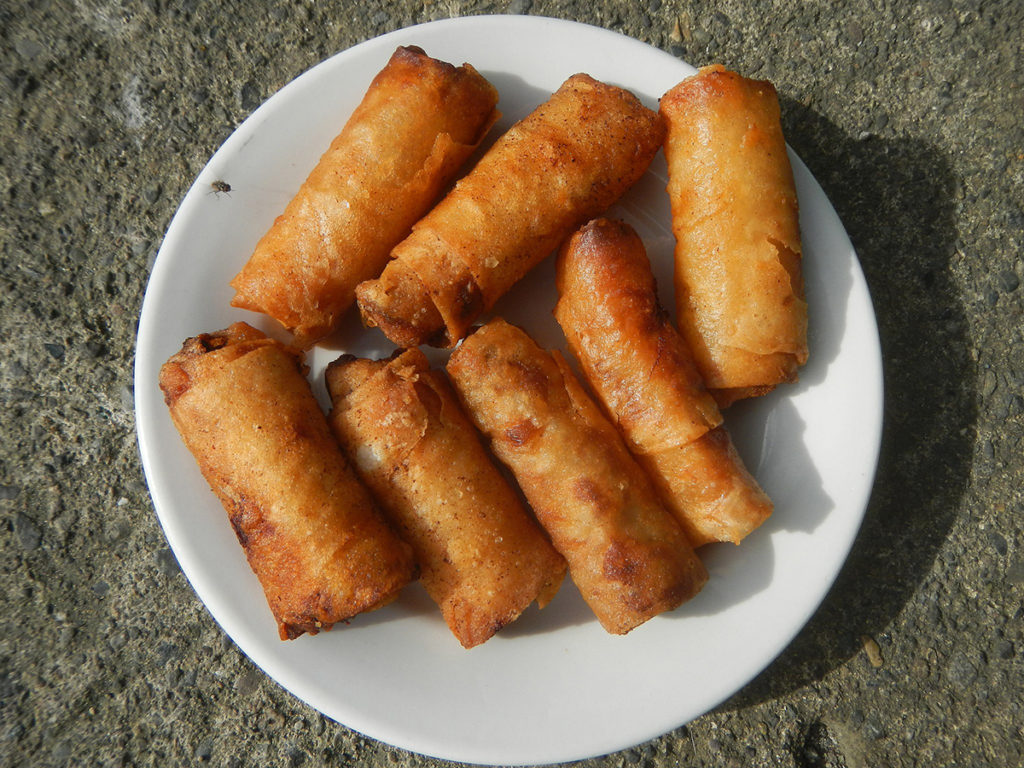
Another food well-loved by Filipinos is the lumpiang shanghai, which—gasp—isn’t at all from Shanghai. While the general trajectory is correct—the dish in fact coming from China—the specific isn’t. The origins of the lumpiang shanghai are in Fujian province, and is a recipe brought by early Hokkien immigrants. Lumpia came from the Hokkien word lunpia, meaning “thin wafer.”
Those who are more familiar with cooking will find that recipes between lumpia and its Westernized counterparts, spring and egg rolls, differ in the ingredients of their skin.
I had grown up thinking that lumpiang shanghai was Chinese, and it is, in a sense. But look for any list of Asian Rolls online and you’ll find that this particular roll is unique to and is best loved in the Philippines.
4. Adobo
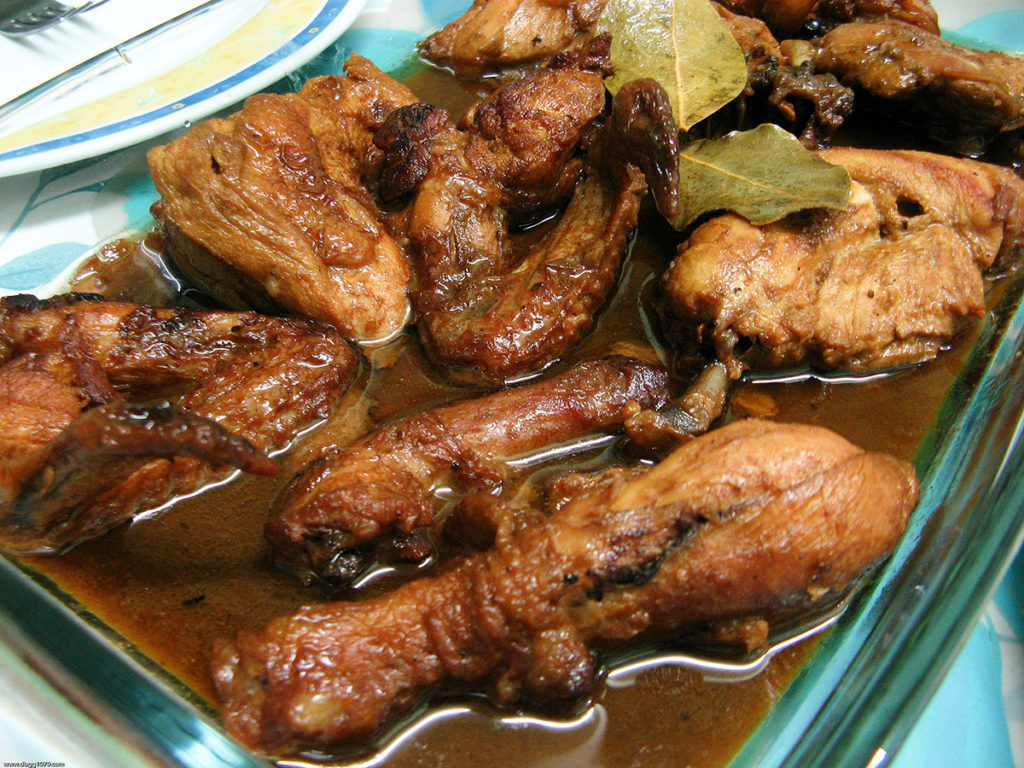
If there was one dish I thought would be uniquely Filipino from the roots, it would be adobo, which was why I was surprised to find that it had possible Mexican or Spanish roots.
Like kare-kare, adobo’s exact origins are unknown. Many are convinced it has European origins, most probably due to its etymology. It comes from the Spanish word adobar, which means “to marinate.” France even has a dish similar to adobo, called daube.
Historian Raymond Sokolov though, begs to differ. He claims that the dish was originally Filipino, but the Spanish, seeing its similarities with their own local version, steered it into the name it has today.
One last thing to note is that these trivia may be interesting on their own, but these dishes and snacks we love collectively as Filipinos also remind us of one important thing: that the concept of being Filipino is found not in the origin of things, but in the act of embracing cultures, practices, food, and people that we love. The well-known and loved trait of our people, hospitality, is about celebrating strength and diversity through open arms, accepting and embracing differences and making them part of our own family.

Patricia Li is a frequent contributor to Familywise Asia and Workwise Asia. She loves to read and write, and tries to incorporate this in her career.
Related Posts
-
Favorite Quotes on Teachers
This Teacher's Day, let us commemorate the importance of all the teachers in our lives.
-
5 Parenting Realities from the Incredibles 2
One of the successes of the Incredibles 2 is carefully yet aptly depicting the challenging…
-
My Parenting Journey with Down Syndrome
This is the extraordinary story of resilience throughout the challenges of motherhood.

